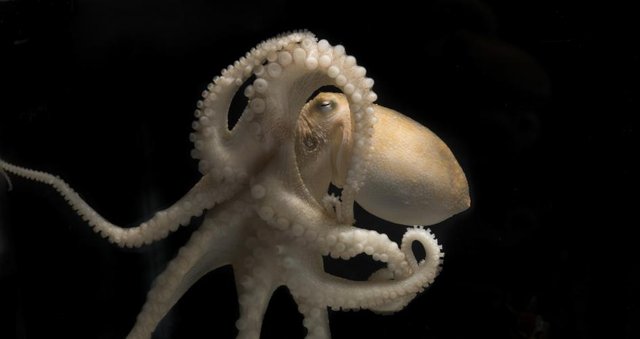‘Smart’ cephalopods adapt by editing genes, but sacrifice ability to evolve MBL-led study finds prolific RNA alteration among octopus, squid

From U Chicago News
Octopus, squid and cuttlefish are famous for engaging in complex behavior, from unlocking and escaping from an aquarium tank to instantaneous skin camouflage to hide from predators. A new study suggests their evolutionary path to neural sophistication includes a novel mechanism: Prolific RNA editing at the expense of evolution in their genomic DNA.https://news.uchicago.edu/article/2017/04/07/smart-cephalopods-adapt-editing-genes-sacrifice-ability-evolveThe study, led by Joshua J.C. Rosenthal of the UChicago-affiliated Marine Biological Laboratory and Eli Eisenberg and Noa Liscovitch-Brauer of Tel Aviv University is published this week in Cell. The research builds upon the scientists’ prior discovery that squid display an extraordinarily high rate of editing in coding regions of their RNA—particularly in nervous system cells—which has the effect of diversifying the proteins that the cells can produce. (More than 60 percent of RNA transcripts in the squid brain are recoded by editing, while in humans or fruit flies, only a fraction of 1 percent of their RNAs have a recoding event.)
In the present study, the scientists found similarly high levels of RNA editing in three other “smart” cephalopod species (two octopus and one cuttlefish) and identified tens of thousands of evolutionarily conserved RNA recoding sites in this class of cephalopods, called coleoid. Editing is especially enriched in the coleoid nervous system, they found, affecting proteins that are the key players in neural excitability and neuronal morphology.
In contrast, RNA editing in the more primitive cephalopod Nautilus and in the mollusk Aplysia occurs at orders of magnitude lower levels than in the coleoids, they found. “This shows that high levels of RNA editing is not generally a molluscan thing; it’s an invention of the coleoid cephalopods,” Rosenthal said. In mammals, very few RNA editing sites are conserved; they are not thought to be under natural selection. “There is something fundamentally different going on in these cephalopods where many of the editing events are highly conserved and show clear signs of selection,” Rosenthal said.
The scientists also discovered a striking trade-off between high levels of RNA recoding and genomic evolution in these cephalopods. The most common form of RNA editing is carried out by ADAR enzymes, which require large structures flanking the editing sites. These structures, which can span hundreds of nucleotides, are conserved in the coleoid genome along with the editing sites themselves. The genetic mutation rate in these flanking regions is severely depressed, the team reported.
Follow @contentjunkie to stay up to date on more great posts like this one.

nice article friend
This post has been ranked within the top 25 most undervalued posts in the first half of Apr 08. We estimate that this post is undervalued by $0.31 as compared to a scenario in which every voter had an equal say.
See the full rankings and details in The Daily Tribune: Apr 08 - Part I. You can also read about some of our methodology, data analysis and technical details in our initial post.
If you are the author and would prefer not to receive these comments, simply reply "Stop" to this comment.